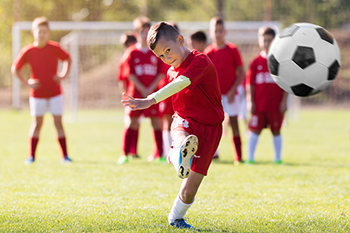

Heel pain in children should never be casually dismissed, as it could be a potential sign of a condition known as Sever's disease. It is common among active youngsters and adolescents, especially those involved in sports. Sever's disease, medically known as calcaneal apophysitis, involves the growth plate within the heel bone and typically emerges in children aged between 8 and 15 years old. Repeated stress placed on the heel due to activities such as running, jumping, and participation in various sports can trigger this ailment. It is characterized by irritation and inflammation in the heel that results in pain. If your child experiences such pain during or after physical activities, or if you observe them limping or favoring tiptoe walking, it may indicate Sever’s disease. Swelling and tenderness in the heel area may also accompany these symptoms. Treatment involves a combination of rest, gentle stretching exercises, and, in some cases, the use of orthotics or specialized shoe inserts. Ignoring heel pain in children can lead to more severe complications or long-term discomfort. For an evaluation, it is suggested that you make an appointment with a podiatrist.
Sever's disease often occurs in children and teens. If your child is experiencing foot or ankle pain, see Dr. Alan J. Spector from Shore Podiatry. Our doctor can treat your child’s foot and ankle needs.
Sever’s Disease
Sever’s disease is also known as calcaneal apophysitis, which is a medical condition that causes heel pain I none or both feet. The disease is known to affect children between the ages of 8 and 14.
Sever’s disease occurs when part of the child’s heel known as the growth plate (calcaneal epiphysis) is attached to the Achilles tendon. This area can suffer injury when the muscles and tendons of the growing foot do not keep pace with bone growth. Therefore, the constant pain which one experiences at the back of the heel will make the child unable to put any weight on the heel. The child is then forced to walk on their toes.
Symptoms
Acute pain – Pain associated with Sever’s disease is usually felt in the heel when the child engages in physical activity such as walking, jumping and or running.
Highly active – Children who are very active are among the most susceptible in experiencing Sever’s disease, because of the stress and tension placed on their feet.
If you have any questions, please feel free to contact our office located in Point Pleasant, NJ . We offer the newest diagnostic and treatment technologies for all your foot and ankle injuries.